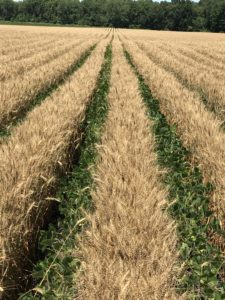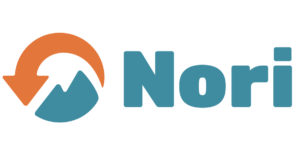Nori Project
By Jim Sheppard | April 18, 2022
Nori Carbon Market
In 2021, we initiated a pilot project with Nori and three Michigan farms. The object was to better understand carbon markets and the impact various cropping systems would have. We chose Nori because their advisor team was available to take questions and help us navigate the process, and their token system has credible traceability in the carbon markets. Nori has built a simple data management program that allows you to input the last 20-years of field practices, then model the next ten-years using conservation practices. This allows a grower to see how many tons of carbon could be captured, which provides an income estimate if the carbon is sold. Nori has a unique system where they offer tokens that represent carbon tons. When a grower uses the Nori system, the carbon tons are “retired” forever, and in their place, tokens are provided. The grower can then sell the tokens in the carbon market when they see fit. This, and Nori’s use of blockchain data management, helps prevent the same carbon tons from being sold multiple times, a big concern if you are buying carbon offsets.
The Nori carbon model uses COMET-Farm, a cooperative project with the USDA and Colorado State University. COMET-Farm models various production practices and cropping systems to predict carbon sequester. You can use COMET-Farm free of charge to model your farm if you want to see how various management changes impact carbon capture. Carbon models and markets use tonnes (2,200 lb.) of carbon dioxide equivalent (CO2eq) as their standard. CO2eq includes carbon dioxide, nitrous oxide and methane, with a greenhouse gas impact factor for each. Farmers and agronomist are used to thinking about carbon as soil organic matter. The excitement about using cover crops to build soil organic matter to capture carbon is spot on, but the comparisons have to be put into perspective. We need to be sure that carbon discussions are comparing apples to apples. A ton of carbon in the soil, is equal to over 3-tonnes of CO2eq. Thus a modest increase in soil organic matter can represent a large sequester of CO2.
Farm Models
 The first farm we modelled produced corn, wheat, dry beans, and potatoes. They used cover crops on all fields, plus used swine manure as supplemental fertilizer in the rotation. This farm basically broke even on carbon capture because of the intensive tillage involved with potatoes and dry beans that offset the minimum tillage for other crops and the use of cover crops.
The first farm we modelled produced corn, wheat, dry beans, and potatoes. They used cover crops on all fields, plus used swine manure as supplemental fertilizer in the rotation. This farm basically broke even on carbon capture because of the intensive tillage involved with potatoes and dry beans that offset the minimum tillage for other crops and the use of cover crops.
The second farm was heavy into cover crops, practiced no-till, and did intercropping. COMET-Farm does not model intercropping yet. And the grower was not able to supply all the necessary records prior to planting season, and then added to his family with a new child at about the same time. This farm probably would show great carbon numbers, but is an example of one of the carbon market challenges, there are lots of records needed to build the 20-years of past cropping history. Collecting the records is very time-consuming.
The third farm was a dairy operation. They use cover crops, double-cropped after corn silage with fall triticale, apply manure at the maximum allowable phosphorus and nitrogen rates, and strip-tilled or no-tilled. Fortunately they use FarmCycle for their farm records, so gathering the necessary data was simple. The results were great, with most of the fields predicted to capture over 0.75-tonnes of CO2eq.
Carbon Challenges
The carbon markets have many challenges to navigate. None are insurmountable, but will be a burden on market adoption by growers. First is the price of carbon. Currently at $15 per tonne, it is too low to produce mass farm excitement. Most carbon experts predict we will see $40 to $60 dollars in the future, like the current European market. A benefit of the Nori market is that growers can hold tokens if they expect the market to appreciate. Before tokens are issued, the farm needs to be verified by a third
party. The verification confirms the grower has control over the land, and the carbon practices modelled are correct. Verification at this time does not include soil testing for carbon changes. Soil testing for carbon is expensive and labor intensive. New technology like EarthOptics’s C-Mapper promises to lower testing costs while increasing accuracy. Proof of carbon capture in the soil will increase buyer confidence and value, thus increase what the farmer can earn. The current Nori verification will cost between $3,500 and $5,000 for most operations. The farm then needs to be reverified every three-years for the 10-year life of the Nori contract. This cost can be an obstacle for smaller operations. Another challenge is getting leased land into the market. Most landlords balk at locking their land up for 10-years. And if they do, they expect to be reimbursed, which eats into the carbon income. These issues are challenges, but will be overcome as markets further develop.
Lessons Learned
If you want to capture carbon in your soil, implement the NRCS 5 Practices of Soil Heath: minimize soil disturbance, use crop diversity, keep the soil covered, keep living roots year-around, and integrate livestock where possible. These practices will increase soil health while capturing carbon. A healthy soil will have better resilience to weather extremes, better yield potential, and need less inputs. And new research shows crops grown on healthy soils have greater nutrient density, an immediate benefit if you feed your crops.
If you have any questions about our carbon market project, please contact us.


